Nutrition in Plants Class 7 Notes Science Chapter 1
Nutrition
Nutrition is the process by which organisms obtain energy from food. Food is a substance that is broken down by chemical processes in the body of an organism to give energy.
Modes of Nutrition
There are two main modes of nutrition: Autotrophic and Heterotrophic.
Autotrophic nutrition and Heterotrophic nutrition differ in how organisms obtain their food.
Autotrophic Nutrition
Autotrophic nutrition is the mode of nutrition in which an organism makes its own food.
Green plants are an example of autotrophs that make their own food through photosynthesis.
Autotrophs
Organisms that follow the autotrophic mode of nutrition are called autotrophs.
The word "autotroph" comes from two Greek words: auto (self) and trophe (nutrition).
Autotrophs are self-sufficient in their nutrition and do not depend on other organisms for food.
Photosynthesis
Photosynthesis is the process by which green plants and some other organisms use sunlight energy to synthesize their own food.
The process occurs in the chloroplasts of plant cells.
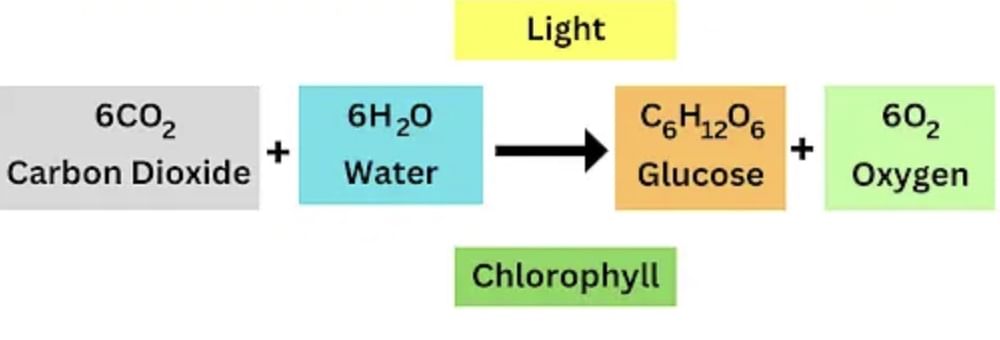
This equation represents the conversion of carbon dioxide and water into glucose and oxygen using energy from sunlight
Parts of a Plant Involved in Photosynthesis
Plants have various parts that play a role in the process of photosynthesis.
The most important parts are the leaves, which contain chloroplasts.
Chloroplasts
Chloroplasts are organelles found in plant cells that contain a green pigment called chlorophyll.
Chlorophyll absorbs light energy from the sun, which is used to power the process of photosynthesis.
Process of Photosynthesis

Photosynthesis involves two stages: the light-dependent reactions(light reaction) and the light-independent reactions (also known as the Calvin cycle/C3 cycle/Dark reaction).
The light-dependent reactions occur in the thylakoid membranes of the chloroplasts and involve the absorption of light energy and the conversion of that energy into chemical energy in the form of ATP and NADPH.
The light-independent reactions occur in the stroma of the chloroplasts and involve the conversion of carbon dioxide and water into glucose (a simple sugar) using the ATP and NADPH produced during the light-dependent reactions.

Importance of Photosynthesis
Photosynthesis is essential for the survival of plants and other organisms that depend on them for food.
It is also responsible for producing oxygen, which is vital for the survival of animals and other organisms that breathe oxygen.
The process of photosynthesis plays a crucial role in maintaining the balance of gases in the Earth's atmosphere.
Necessary Conditions for Photosynthesis
Here are some necessary conditions for photosynthesis:
1: Sunlight
Sunlight is the primary source of energy for photosynthesis. Plants absorb sunlight through the chlorophyll pigments present in their leaves. In the presence of sunlight, carbon dioxide and water molecules react to form glucose and oxygen.
2: Chlorophyll
Chlorophyll is a green pigment present in the leaves of plants. It absorbs light energy and converts it into chemical energy that the plant can use for photosynthesis. Without chlorophyll, photosynthesis cannot take place.
3: Carbon Dioxide
Carbon dioxide is a gas present in the air. It is an essential component of photosynthesis as it provides the carbon atoms needed to form glucose. Plants take in carbon dioxide from the air through tiny pores called stomata.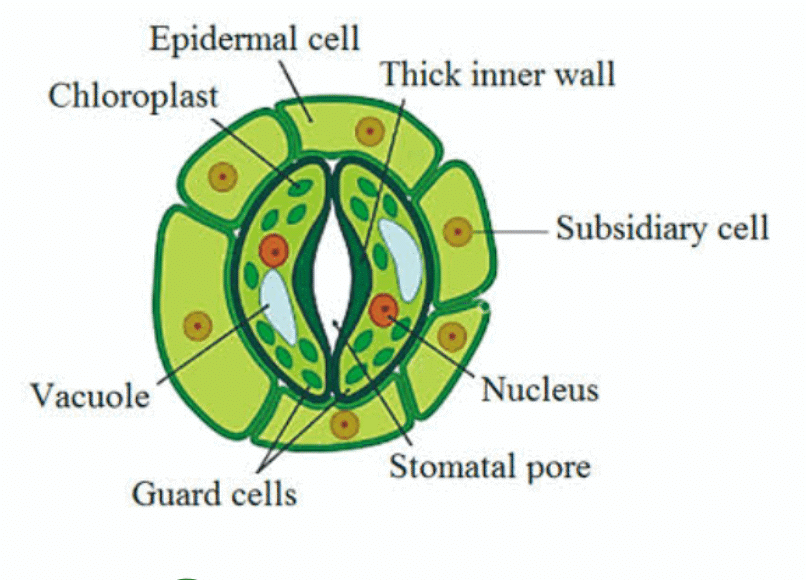
(a) Open Stoma If there is sufficient light and water, the guard cells expand and bend apart, which results in the stoma opening up. This enables carbon dioxide to penetrate the leaf cells.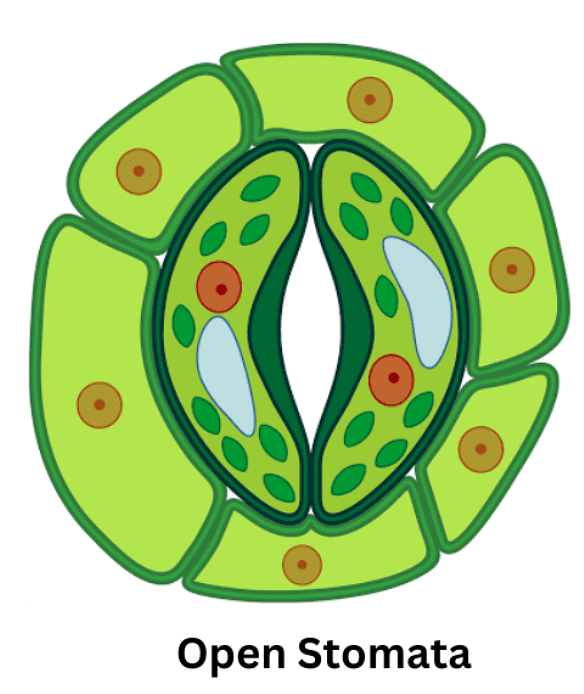
(b) Closed Stoma A stoma is surrounded by two guard cells, which are shaped like half-moons. These cells control the opening and closing of the stoma.
4: Water
- Water is an essential component of photosynthesis, and plants absorb water from the soil through their roots. The transport of water from the roots to the leaves is facilitated by specialized tissues called xylem and phloem.
- Xylem is responsible for transporting water and minerals from the roots to the leaves. It consists of a network of narrow tubes that run up through the stem and into the leaves. The movement of water through the xylem is driven by transpiration, which is the loss of water vapor from the leaves.
- Phloem, on the other hand, is responsible for transporting sugars and other nutrients from the leaves to the rest of the plant. It is a system of tubes that run from the leaves to the roots and other parts of the plant. The movement of nutrients through the phloem is driven by a process called translocation, which is the movement of nutrients from areas of high concentration to areas of low concentration.
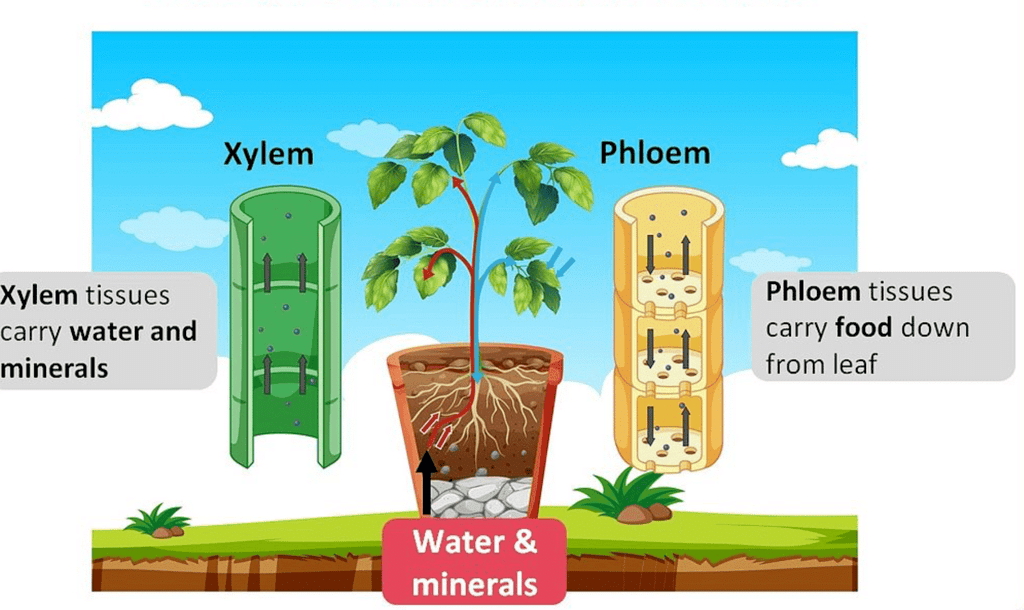
5: Temperature
Temperature plays an important role in photosynthesis. It affects the rate of chemical reactions in plants. Photosynthesis works best at temperatures between 20-25 degrees Celsius. If the temperature is too low or too high, the rate of photosynthesis decreases.
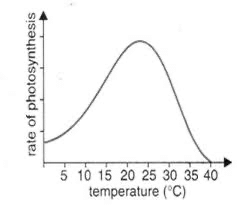
Heterotrophic Nutrition
Heterotrophic nutrition is the mode of nutrition in which an organism obtains food from other organisms.
Animals, fungi, and many bacteria are examples of organisms that follow heterotrophic nutrition.
Heterotrophs depend on autotrophs or other heterotrophs for their food.
Heterotrophic Organisms
Organisms that rely on heterotrophic nutrition are called heterotrophs. They cannot produce their own food and must obtain it from other sources.
Types of Heterotrophic Plants
Parasitic plants
Saprophytic plants
Insectivorous plants
Symbiotic plants
1: Parasitic Plants
Parasitic plants are plants that depend on another plant, known as the host, for their nutrition.
Examples: Cuscuta (dodder), mistletoe, and Rafflesia
 Dodder
Dodder
Parasitic plants can harm their host plants to some extent but rarely kill them.
Types of Parasitic Plants:
- Root Parasites: These plants have special roots that penetrate the tissues of their host plant to absorb nutrients. Example: Cuscuta (dodder).
- Stem Parasites: These plants twine around the stems of their host plants and send branches around neighboring stems. Example: Dodder.
- Leaf Parasites: These plants attach themselves to the leaves of their host plant to absorb nutrients. Example: Mistletoe.
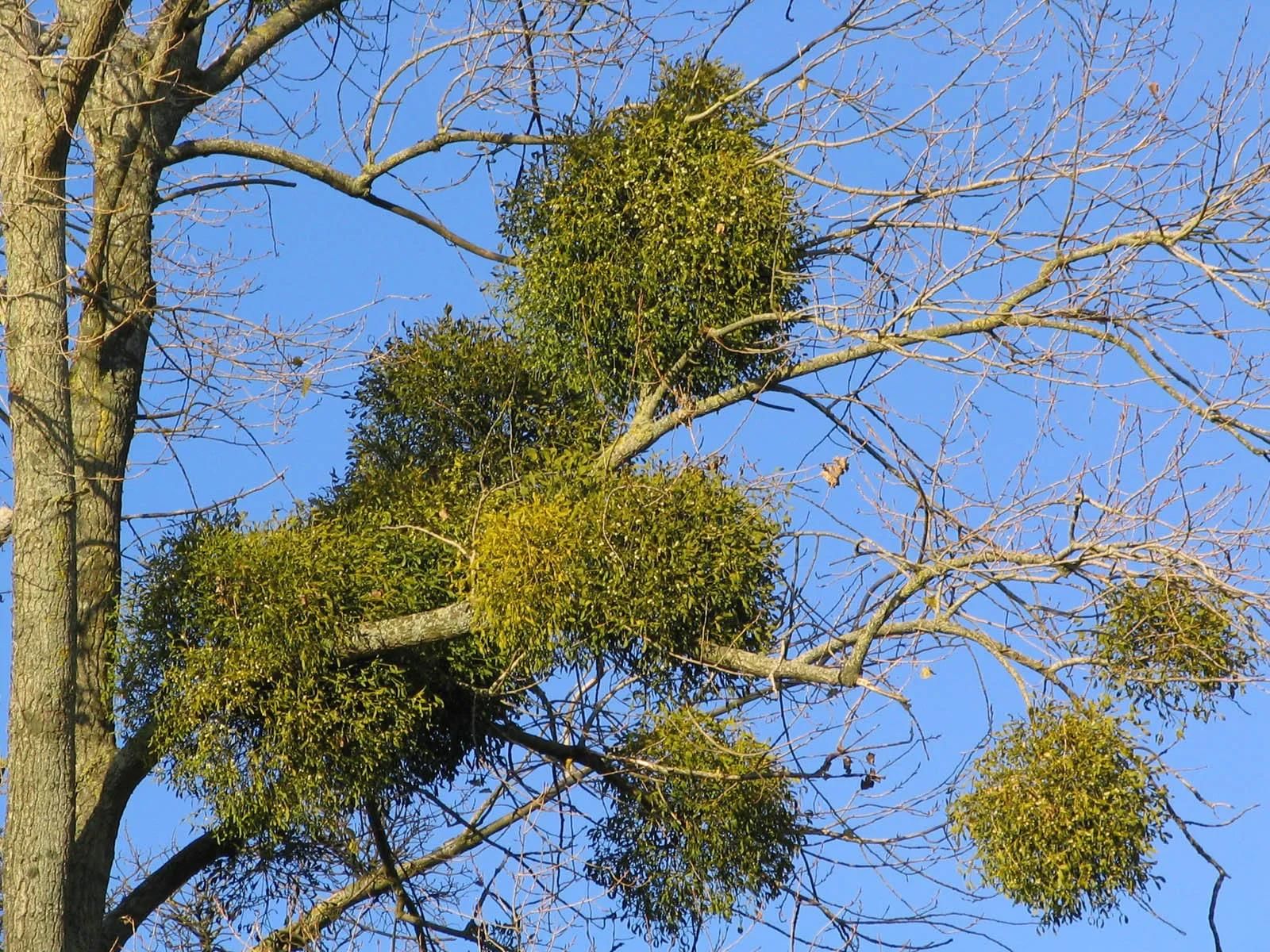 Mistletoe
Mistletoe
Characteristics of Parasitic Plants:
Parasitic plants have a short root and long stem.
They lack chlorophyll and cannot make their own food.
They obtain nutrition from their host plant through special structures.
Some parasitic plants can make their own food but still depend on the host plant for minerals and water.
Impact of Parasitic Plants:
Parasitic plants can harm their host plants by slowing down their growth and sometimes causing heavy damage.
However, some parasitic plants may have positive effects on their host plants and ecosystems.
Example: Mistletoe provides shelter and food for birds.
{Fun Fact: Rafflesia, a parasitic plant, bears the world's largest flower with a diameter of up to 106 cm and can weigh up to 10 kg!}
Control of Parasitic Plants:
Biological control: Introducing natural predators of the parasitic plant to control its growth.
Chemical control: Using herbicides to kill the parasitic plant.
Physical control: Removing the parasitic plant manually.
2: Saprophytic Plants
Saprophytic plants obtain their nutrients from dead and decaying plant and animal matter.
Saprophytic plants often have no leaves and can have brightly colored flowers.
Characteristics of Saprophytic Plants:
They are usually whitish in color.
They grow in deep shade in tropical forests.
They obtain nutrients through their roots, which contain fungi called saprotrophs.
They have no chlorophyll and cannot make their own food.
Examples of Saprophytic Plants:
Indian Pipe: Found commonly in Asia and North America, it has a white stem and a bell-shaped flower.
Indian pipe
Coral Root: Found in forests around the world, it has small, yellowish-green flowers and a branching stem.
Role of Fungi in Saprophytic Plants:
Fungi convert dead and decaying matter into nutrients that can be used by saprophytic plants as food.
Fungi are also called saprotrophs.
Importance of Saprophytic Plants:
Saprophytic plants play an important role in the ecosystem by recycling nutrients from dead and decaying matter.
They help to maintain the health of the soil and contribute to the growth of other plants.
Control of Saprophytic Plants:
Since saprophytic plants do not harm living plants, they do not require control measures.
3: Insectivorous Plants
Insectivorous plants are plants that obtain some or most of their nutrients by trapping and consuming animals, especially insects. These plants usually grow in areas where the soil is deficient in certain nutrients like nitrogen.
Examples of Insectivorous Plants
Venus Flytrap
The Venus flytrap is an insectivorous plant that has leaves modified to trap insects. The inner surface of the leaves has short, stiff hair. When an insect touches the hair, the leaves snap shut in less than a second, trapping the insect. The insect is then digested.Venus Flytrap
Pitcher Plant
The pitcher plant has a modified leaf that forms a tubular pitcher-like structure. The inside of the pitcher is lined with downward pointing hair that prevents any trapped insect from climbing up and escaping. The fluid at the bottom of the pitcher contains digestive juices that digest the trapped insect.Pitcher Plant
Sundew
The sundew plant has leaves with long, thin structures called tentacles, which have drops of a sticky substance, called mucilage, at their ends. Once an insect touches the tentacles, it gets stuck in the mucilage and cannot escape. The insect is then digested.
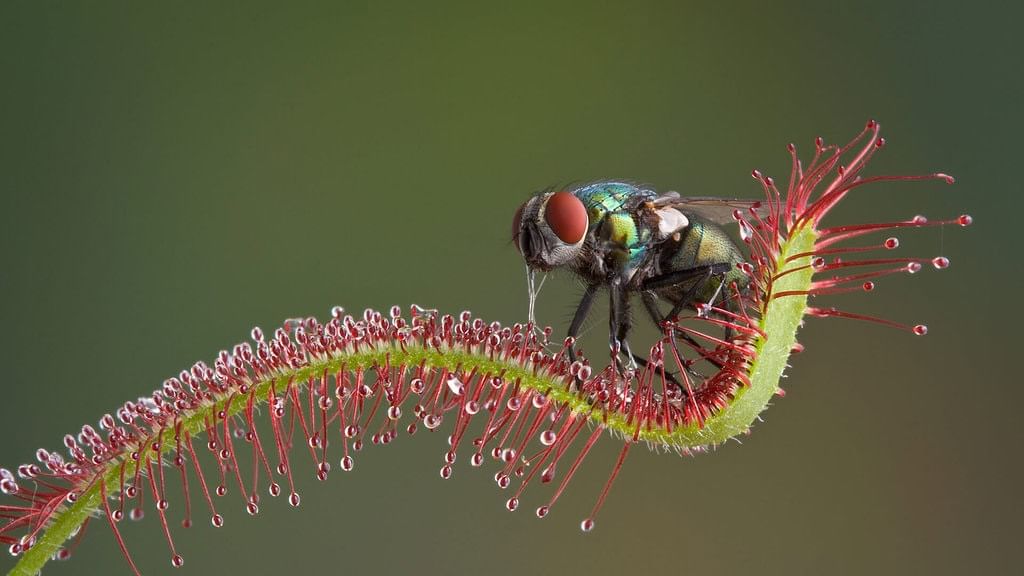 SundewBladderwort
SundewBladderwort
Bladderworts have slender leaves that bear numerous small, pear-shaped bladder structures acting like trapdoors that suck in small insects in less than a second.Bladderwort
4: Symbiotic Plants
Symbiotic plants have a mutually beneficial relationship with other organisms. These plants have evolved to form a symbiotic relationship with fungi, bacteria, or other plants. The plant provides a home and nutrients for the organism, while the organism helps the plant obtain nutrients. Examples of symbiotic plants include orchids and legumes.
Lichens
Lichens are a symbiotic association between a fungus and microscopic chlorophyll-containing organisms called green algae. In this association, the algae provide food to the fungus through photosynthesis. In return, the fungus provides shelter and protection to the algae. Lichens can grow in harsh conditions such as in deserts or on rocks where they would not be able to survive otherwise.
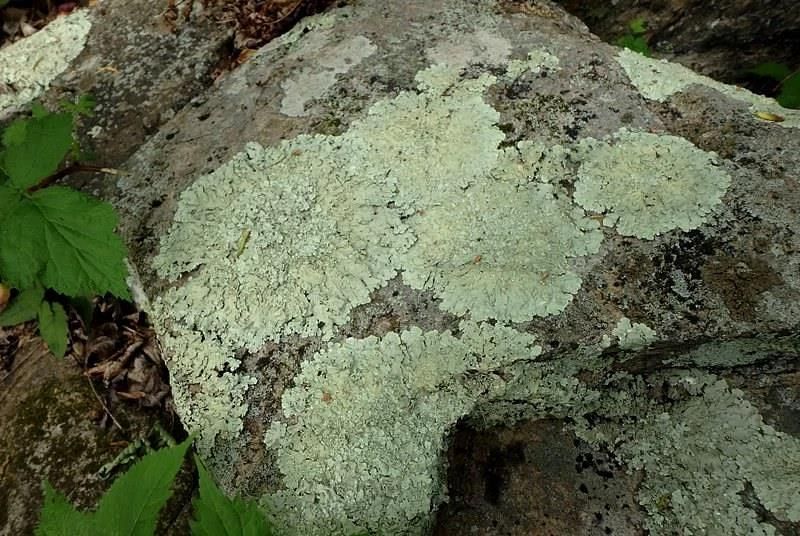 Lichens on rock
Lichens on rockReplenishment of Nutrients in the Soil
Plants require mineral nutrients, such as nitrogen, for their growth. Over time, the depletion of nitrogen in the soil can affect plant growth. To replenish the nutrients in the soil, manures and fertilizers are used that contain nitrogen, phosphorus, and potassium.
Symbiosis with Rhizobium Bacteria
Roots of some plants, such as peas, contain bacteria called Rhizobium. These bacteria convert atmospheric nitrogen into usable forms like ammonia, and the plant provides nutrients for the bacteria's growth. This symbiotic association of Rhizobium and leguminous plants, such as peas and beans, is a natural way of replenishing the soil with nitrogen. Farmers sometimes grow these plants alternately with other crops to restore the nitrogen content of the soil.

Key Words:
Activity 1:-
Aim: To prove that the green parts of a plant, which have chlorophyll, can do photosynthesis.
Materials: A leaf with two colours, a beaker, a stand for the beaker, a Bunsen burner, a test tube, water, alcohol, and iodine solution.
Method:
- Heat water in a beaker that is three-fourths full and keep it on a stand.
- Soak the leaf in the water for two minutes to soften it.
- Take the leaf out and put it in a test tube containing alcohol that is also three-fourths full.
- Put the test tube in hot water for ten minutes. As alcohol heats up, it will remove chlorophyll from the leaf, and it will become almost colourless.
- Take the leaf out and put four drops of iodine solution on the leaf's surface.
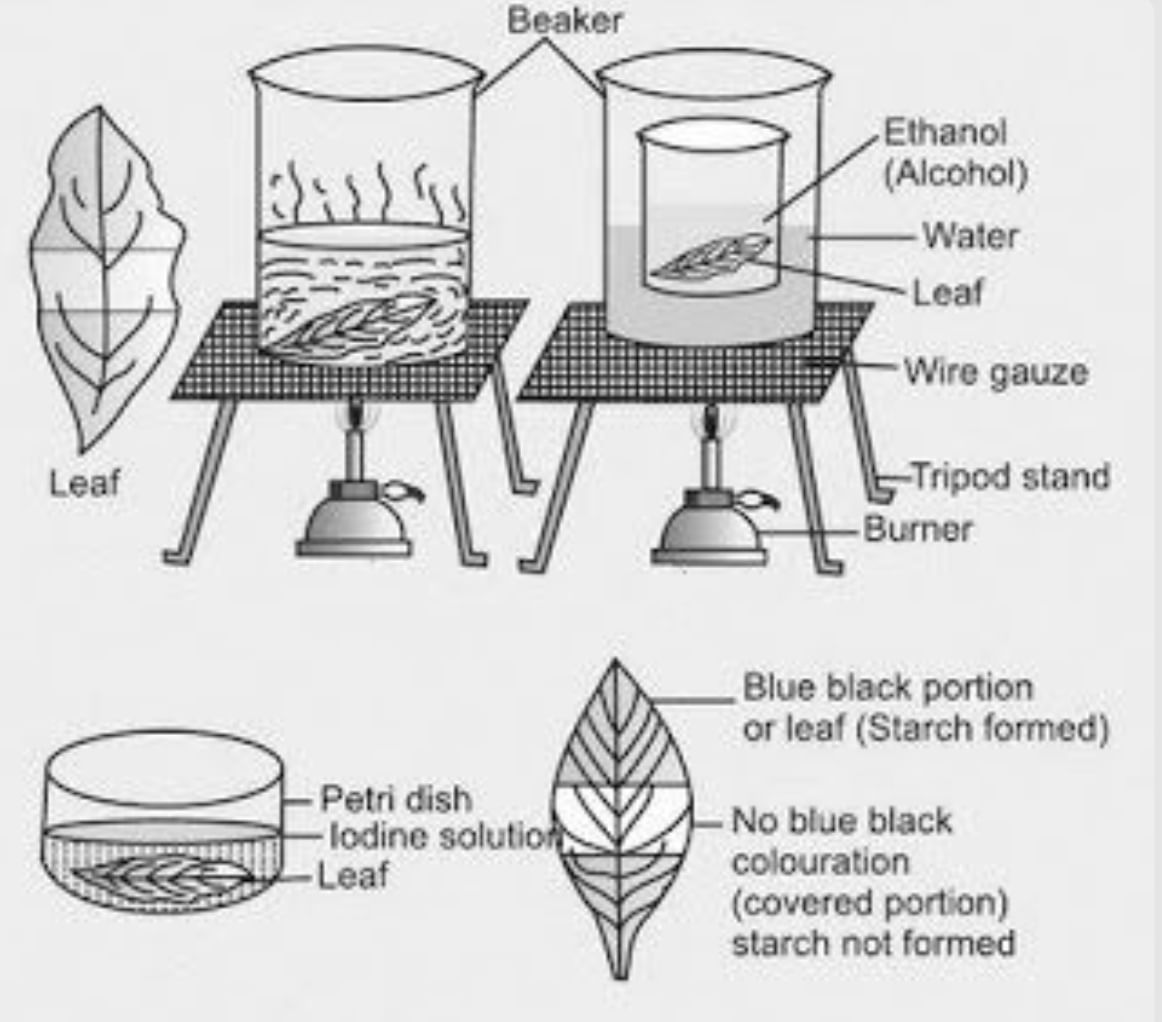
Observation: The colourless area will not change, but the green area will turn blue-black after adding iodine solution.
Activity 2:-
Aim: To investigate if light is required for photosynthesis.
Materials: A green plant, black paper, scissors, and a clip.
Method:
- Keep the plant in a dark corner for three days.
- Pick a leaf from the plant and check it for starch to make sure it is completely starch-free.
- Use a strip of black paper to cover a part of the leaf.
- Place the plant in sunlight for at least six hours.
- Pick the leaf that was covered with the black strip, take off the strip, and test the leaf for starch.

Observation: The part of the leaf covered by the strip does not change when iodine solution is added. The part of the leaf that was not covered turns blue-black.
Activity 3:-
Aim: To demonstrate that carbon dioxide is required for photosynthesis.
Materials: A potted plant, dilute potassium hydroxide solution (corrosive, so handle carefully), a conical flask with a split cork, iodine solution, and a dropper.
Method:
- Place the potted plant in a dark room for a few hours and water it.
- Pour dilute potassium hydroxide solution into a conical flask. The solution absorbs carbon dioxide from the air.
- Place one of the leaves (without breaking it from the plant) inside the flask (without touching the solution) and cork it.
- Put the whole setup in sunlight.
- After a few hours, test the leaf inside the flask and another leaf of the same plant for starch using iodine solution.
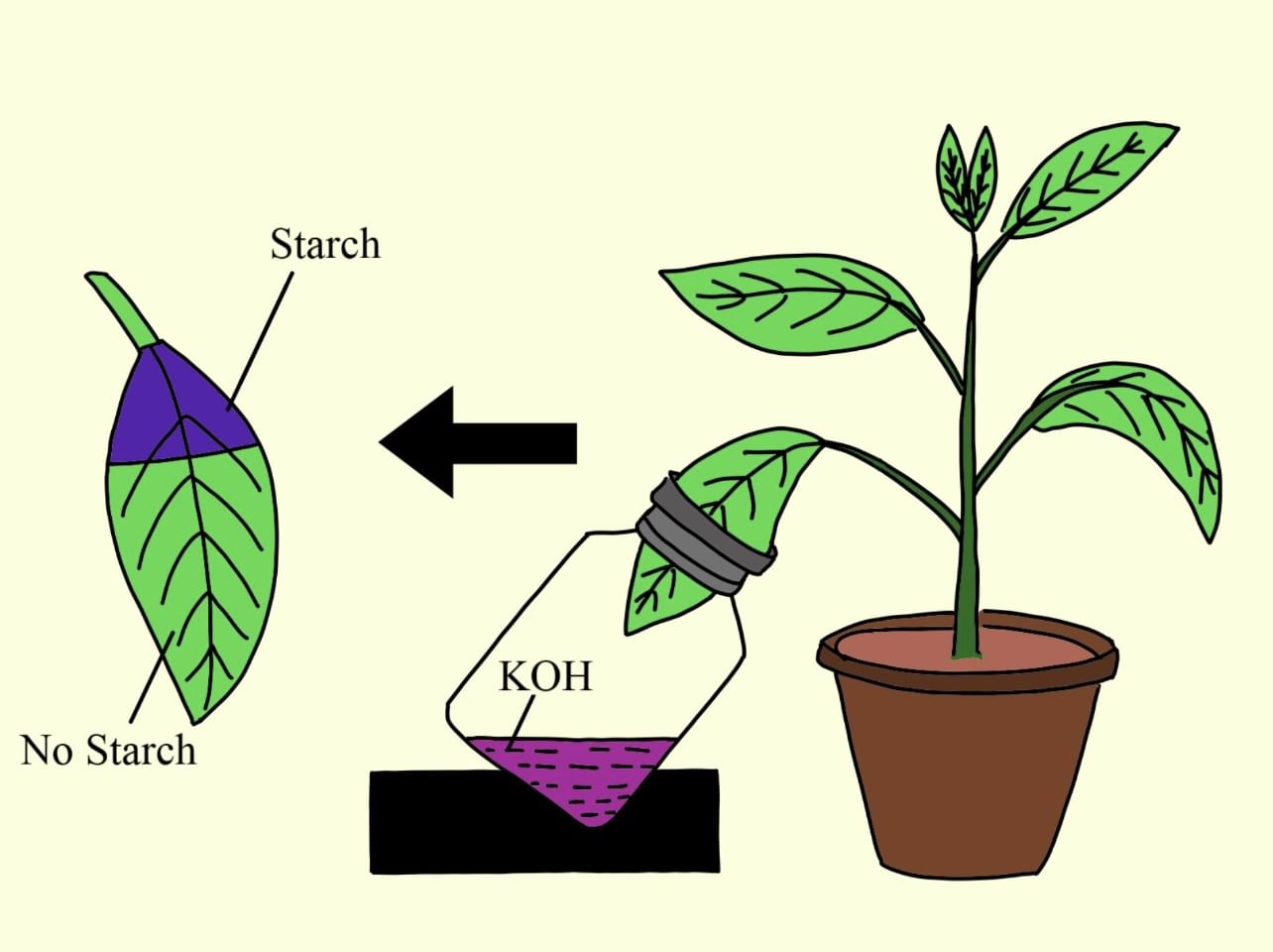
Observation: When iodine solution is added, the leaf that was enclosed in the conical flask shows no change, while the other leaf turns blue-black.
Activity 4:-
Aim: To grow fungi.
Materials: A piece of bread, water, and a box.
Method: Wet the bread with water and keep it in the closed box outside for a few days.
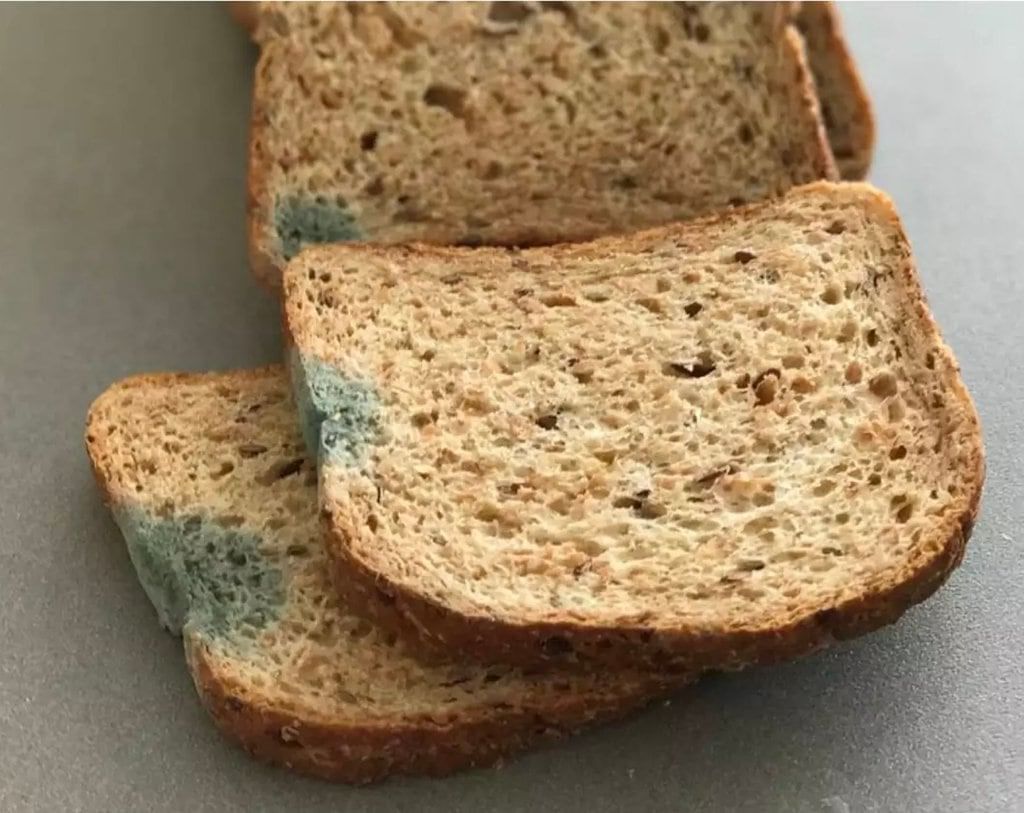
Observation: You will notice grey patches on the bread.
|
139 videos|151 docs|18 tests
|
FAQs on Nutrition in Plants Class 7 Notes Science Chapter 1
| 1. How do plants replenish nutrients in the soil? |  |
| 2. Why is it important to replenish nutrients in the soil for plant growth? |  |
| 3. How do nutrients get depleted in the soil? |  |
| 4. What are some natural ways to replenish nutrients in the soil? |  |
| 5. How can farmers ensure proper nutrient replenishment in their soil for sustainable agriculture? |  |






















